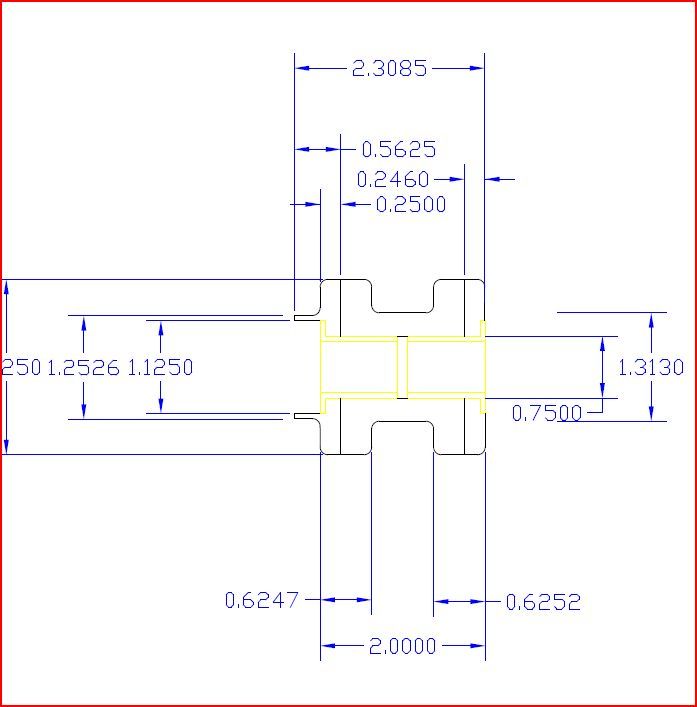Hi Jason,
Thank you very much. Here are my replies to Jason's points (originally sent by email but put on here in case anyone wants to correct me on anything or has anything to add.)
1) Yes – I'm uncertain about that as well – the design and dimensions came from a model builder here – the design is very similar to one that's used for hydraulic cylinders. I've got a fair-sised piece of PTFE (Teflon) stock so I can afford to get it wrong a few times and have to re-make them.
2) I wondered about that – it didn't 'feel' right – I'll change to the way you recommended. Should I use an M4 coarse or M4 fine thread? (Maybe I should go for M4 fine just for uniformity since most of the rest of the engine seems to have ended up using fine threads.)
3) Yes – the whole piston is 10mm long – I'll reduce the length as you suggested.
4) Is stainless steel not suitable for the piston in a brass cylinder? – I wasn't sure. Ideally I'd make a gun metal (bronze) rather than brass cylinder but a friend gave me a big chunk of brass stock so I felt that I should use it. I've become more and more interested in cast iron and in the future I'd like to make an engine with cast iron cylinder and piston but I'll avoid cast iron in this particular engine to keep it rust-free. I'm usually sceptical of aluminium in a steam engine because I'm concerned that contact with air and hot steam may cause it to build up too thick an oxide layer and jam – but this comes from school chemistry not engineering experience.
5) Thanks – I'll halve the thickness of the cast iron rings.
6) Thanks – I was following Greenly on this but I noticed that hydraulic engineers often didn't have a solid ring between the split ones.
7) For the PTFE (Teflon) with a scalpel and a good light. For the cast iron I have no idea but I hoped that somehow I'd manage to find out along the way or that someone would tell me (maybe using a slit saw or a very sharp and very carefully positioned chisel?).
8) Thanks – I didn't know how springy cast iron was – I'll give that a try – it makes sense since it's how internal combustion engine pistons and rings are made.
I've updated the drawings with Jason's suggestions.
Hi Clive,
Thank you very much – I remembered the problems you'd had and left part of the piston un-threaded but it was only a small part and probably wouldn't have been enough. I think I got the idea that I could thread perfectly true from the design of the S50 but the more I think about it the more I realise that a tapped thread is always likely to be a less true than a turned or bored surface.
Do you have any views on whether the thread in the piston should be metric fine or coarse?
I apologise for sending SVG files with my plans by email and having only unclear images on here. I'm looking at ways to put clearer images online so that everyone can give their thoughts.
PS – I had a quick look in Greenly and he agrees with you both re. joining the piston and piston rod.
Will
Edited By Will Robertson on 31/10/2012 19:25:03
Paul Lousick.





